How to sew an evening dress with your own hands

This is a very common problem among girls who have no experience in sewing, who want to try themselves as a fashion designer and create a beautiful and unique evening dress with their own hands. If this lesson seems difficult, then it is certainly not boring, because we are talking about creativity.
But in order not to waste time, let's move on to practice, consider the main stages of creating an evening dress and, guided by the instructions and advice of experienced craftsmen, we will model a simple dress in the Greek style.

Model and pattern
The general rules state that the style of the dress is chosen depending on the celebration and the characteristics of the figure. The same applies to the variant of its execution.
If we talk about a Greek evening dress, then it is characterized by simplicity of design, draperies or folds. And how they will be located is up to you.
So, having decided on the model, we proceed to creating or searching for a pattern - this is the second step. You can find it on the Internet or in magazines.



Keep in mind that the pattern for an evening dress will not differ much from a pattern for everyday wear. The difference lies in the depth of the neckline, the presence of a cut, bold drapery options. The modeling takes place on a basic block, which we will talk about later.
Be sure to think over the options for the details of your outfit and sketch them on a piece of paper.
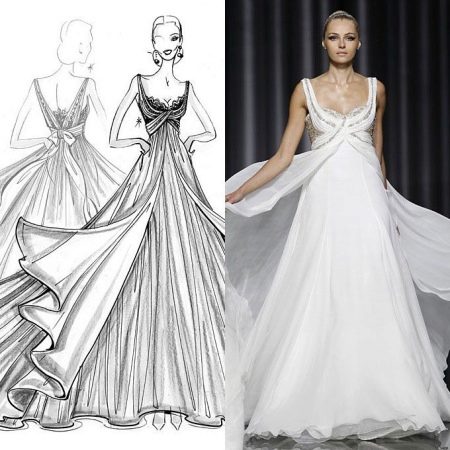
Taking measurements
Each girl has her own peculiarities of the figure, which must be taken into account when modeling a pattern or creating it. Even if you have a pattern that is suitable for the size, it will not be superfluous to double-check it and correct it according to your figure.... This is the third step towards creating a do-it-yourself evening dress.
The main measurements that are taken with a centimeter are the girth of the chest and its height, the girth of the waist and hips, the width of the back, and the length of the dress. This data must be halved. From the front of the dress, 2 centimeters should be taken away in favor of the back of the pattern.
In order for the measurements to be taken correctly, ask your relatives or a friend for help, you can also take the measurement in the atelier.
Choice of fabric
Different aspects influence the choice of fabric:
- model;
- season;
- recommendations of the fashion house for the pattern you like;
- sewing skill level.



You can quickly sew a dress if you choose a simple model and easily processed fabric. For example, you can save time by combining a complex fabric with a simple cut and vice versa.
Of course, it is not difficult to list the range of dress fabrics, but it is not necessary. You can choose the material successfully by comparing the properties of the selected fabric and the model recommended for sewing. Also, pay attention to your own wardrobe and examine the ready-made clothes on the shelves.
Modeling a dress in the Greek style


Let's get down to the modeling itself. Take the pattern of the base of the dress and load it into the modeling program or transfer the main points with the lines to the tracing paper.
Decide on the length of the dress and mark it on segment BF by increasing or decreasing the segment.
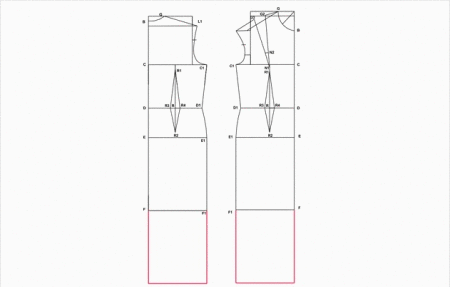
In the drawing, draw an insert under the chest line. To do this, set aside 4-5 cm from points C and C1 and connect the new points with a straight line. From this line, set aside another 8 or 9 cm (insert width) down and connect the points with a line.
Close the darts. The insert will be solid and seamless. Decorate both inserts with smooth lines.
Mark on the drawing, taking into account the features of the model, the facing of the neck (in the figure it is indicated in pink). Its width is 1.5-2 cm.The neckline at each shoulder seam is widened by 2.5-3 cm from point G.
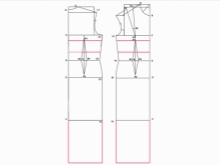
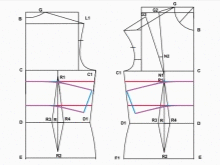
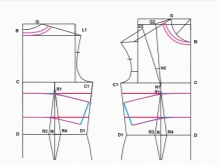
Place the solution of the chest dart G2-N1-G3 into the neck of the dress. Or translate it into a cutting line under the chest. To do this, draw a line perpendicular to the neckline. (It is shown in red). The displaced throat sections are indicated by numbers 1 and 2.
Close dart G2-N1-G3 by moving piece N1-G2-1-2 (connect points G2 and G3).
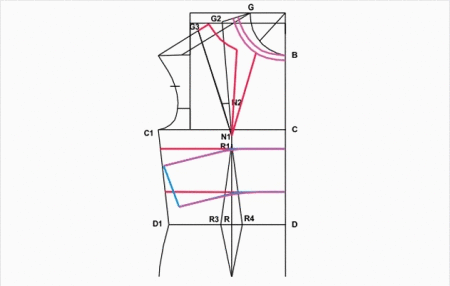
Draw a smooth line on the armhole of the dress, as shown in the diagram.
To crimp the front of the bodice, expand it using the slits, they are highlighted in blue in the figure. Cut and expand the pattern so that each cut increases by 3-4 cm. Draw a smooth line for the uneven neckline.
To form soft folds, widen the bottom of the back and dress shelves by 15-20 cm.
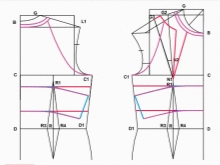
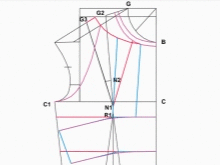
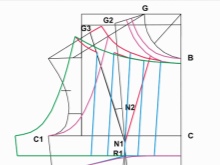
Cut open
The preparatory phase has been completed. The finished dress pattern details in the Greek style look like this. Now you need to transfer them to fabric. Secure the paper pieces to the fabric with pins. Circle them with chalk or remnants, taking into account seam allowances and cut them out. Finish the edges if necessary.
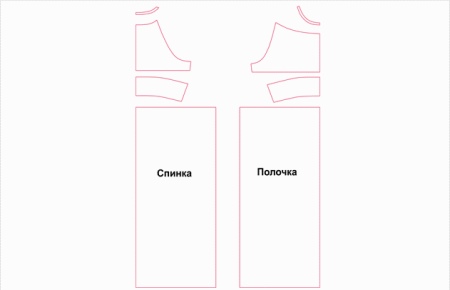
Sewing
The details of the dress are also collected one by one:
- Fold in the pleats on the bodice details.
- Attach the belt details to the front and back bodice.
- Decorate the armhole and trim the neckline with a bias tape.
- Sew the left side seam on the bodice of the dress.
- Pucker the pleats into the skirt, sew a side seam and stitch the skirt to the bodice.
- Sew the zipper into the right side.
- Hem the bottom of the dress.
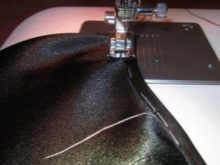


It is advisable to try on the dress after sewing the details in order to immediately correct the shortcomings. The finished dress in the Greek style should be decorated in accordance with the idea.

We have covered the basic steps of creating a do-it-yourself evening dress. You can supplement them with nuances and, of course, choose your own scheme of work.
And even if the work fails, there is no need to despair, even professionals are mistaken. Successful dress models are just a few of the many dresses they have created.









An evening dress in the Greek style is suitable for any figure because of the high waist. Girls, we take the pattern into service!